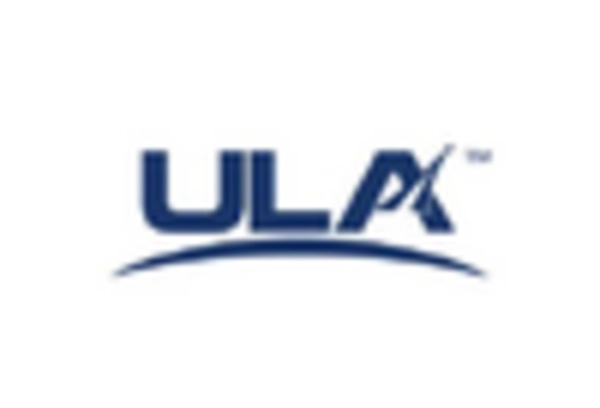Emerging International Partnerships
Emerging international partnerships are reshaping the landscape of the space launch-services market. Collaborative efforts between U.S. companies and foreign governments are becoming increasingly common, as nations seek to leverage each other's strengths in space exploration. These partnerships often result in shared resources, technology transfer, and joint missions, which can enhance the capabilities of the space launch-services market. For instance, agreements with countries in Europe and Asia are likely to lead to increased launch opportunities and shared payloads. This trend suggests a more interconnected global space economy, where U.S. launch providers can expand their reach and influence. As these partnerships develop, they may also lead to more competitive pricing and innovative solutions in the market.
Expansion of Commercial Space Activities
The expansion of commercial space activities is a pivotal driver for the space launch-services market. With private companies increasingly entering the space sector, the demand for launch services is on the rise. In 2025, commercial entities are expected to account for over 60% of all launches, reflecting a shift towards privatization in space exploration. Companies are investing heavily in satellite deployment, space tourism, and interplanetary missions, which necessitate reliable launch services. This trend indicates a robust growth trajectory for the space launch-services market, as commercial players seek to establish their presence in low Earth orbit and beyond. The competitive landscape is evolving, with new entrants challenging traditional aerospace companies, thereby fostering innovation and cost reduction.
Increased Investment in Space Infrastructure
Investment in space infrastructure is a crucial driver influencing the space launch-services market. The U.S. government, alongside private investors, is channeling substantial funds into developing launch facilities, ground support systems, and satellite networks. In 2025, it is estimated that investments in space infrastructure will exceed $10 billion, reflecting a commitment to enhancing launch capabilities. This influx of capital is likely to improve the overall efficiency and safety of launch operations. Moreover, the establishment of new spaceports across the U.S. is expected to facilitate a greater number of launches, thereby expanding the operational capacity of the space launch-services market. Enhanced infrastructure not only supports current demand but also positions the market for future growth.
Technological Advancements in Launch Systems
The space launch-services market is experiencing a surge in technological advancements that enhance the efficiency and reliability of launch systems. Innovations such as advanced propulsion technologies and automated launch processes are becoming increasingly prevalent. For instance, the development of hybrid rocket engines and electric propulsion systems is expected to reduce launch costs significantly. In 2025, the market is projected to reach a valuation of approximately $30 billion, driven by these technological improvements. Furthermore, the integration of artificial intelligence in mission planning and execution is likely to streamline operations, thereby attracting more clients to the space launch-services market. As these technologies mature, they may also lead to increased frequency of launches, further stimulating market growth.
Growing Interest in Space Research and Exploration
The growing interest in space research and exploration is a significant driver for the space launch-services market. As scientific organizations and universities ramp up their efforts to explore celestial bodies and conduct experiments in microgravity, the demand for reliable launch services is expected to increase. In 2025, the number of research missions is projected to rise by 25%, indicating a robust appetite for exploration. This trend is further fueled by public interest in space, as missions to Mars and lunar exploration capture the imagination of the populace. Consequently, the space launch-services market is likely to benefit from increased funding and support for research initiatives, which will drive demand for launch capabilities.

















Leave a Comment